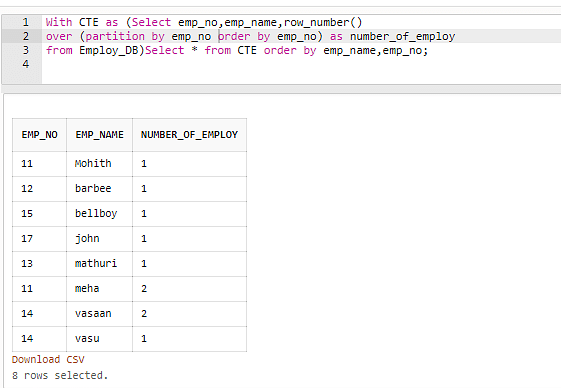

Print(filtered_trips) # Print the filtered past trips lower() = location]įiltered_trips = # Filter past trips based on query parametersįiltered_trips = past_trips # Initialize the filtered trips list with all past tripsįiltered_trips =. # Retrieve query parameters for filtering # Convert the rows into a list of dictionaries # Fetch past trip information from the databaseĬursor.execute("SELECT * FROM past_trips")
SQLITE COUNT ROWS IN RESPONSE CODE
Here is the code for my Flask app: methods=) I'm sure this is a simple fix but I have scoured the internet and have failed to find a solution to my specific predicament. Currently, the user only has access to the most recent entry for that month, location or both. At the bottom of the browser there is a search that will allow the user to see camping trips by month, location or both. To clarify, the user logs a camping trip that includes: start_date, end_date, location, camping_site, weather, notes, and pictures. I want to be able to recall all entry's that satisfy parameters utilized. The user can recall 1 entry "row" based on 2 different parameters (month and/or location). I have created an html file that saves user inputs into an SQLite database. I am creating a camping log using SQLite. The ORDER BY clause goes after the FROM clause but before the LIMIT.I'm new to Flask and Python. To modify the order so that the most recent year and the most common names are on top: SELECT * FROM baby_names ORDER BY state DESC, year DESC, count DESC stateīeing able to order the result rows is particularly useful when using LIMIT, as it allows us to quickly return just the "top 3" or "bottom 10" of the results. the least common names: SELECT * FROM baby_names ORDER BY state DESC, count ASC The following (somewhat nonsensical) query will return the rows in reverse-alphabetical order of state, then in ascending order of count, i.e. The ORDER BY keywords are only used once. Just add more column names and ordering keywords – i.e. a tie, we can specify more columns to use in the sorting criteria.


In the case when the column to sort by has duplicate values, i.e. To sort the baby names table in descending order of count: SELECT * FROM baby_names ORDER BY count DESC If we want to explicitly specify ascending order, we use the ASC keyword: ORDER BY "some_column_name" ASC The syntax looks like this: ORDER BY "some_column_name" DESC If we want to find the rows with the largest count values, we use the DESC keyword. When it comes to numbers, that means smallest first. Here's a standalone example: SELECT * FROM baby_names ORDER BY count īy default, ORDER BY sorts in ascending order. The basic syntax is: ORDER BY "some_column_name" The ORDER BY clause, as you can imagine, let's us specify the sorting order of the returned data rows. Thus, the following queries will not work: SELECT * LIMIT 1 FROM baby_names SELECT * LIMIT 1 FROM baby_names The ORDER BY clause So the key thing to notice is the specific order and arrangement of the SQL statement: just as FROM comes after the SELECT clause, LIMIT comes after both. Mind the ordering of the syntaxĪt this point, we've only covered three different clauses. Even before you get to exporting data, returning 1,000,000 rows will just be slower than returning 10 rows, all other things being equal. LIMIT is a good way to reduce the execution time. But the main concern is that in the real-world, retrieving data rows takes computational time. Why use LIMIT when, well, we could just have all the data? Remember that more data is not always better. Pretty easy, there's not much more to LIMIT than the keyword itself, followed by the number of rows we want to see. With LIMIT, we can restrict the number of rows returned: SELECT * FROM baby_names LIMIT 1 With SELECT, we were able to specify exactly how many columns we wanted in the returned dataset.


 0 kommentar(er)
0 kommentar(er)
